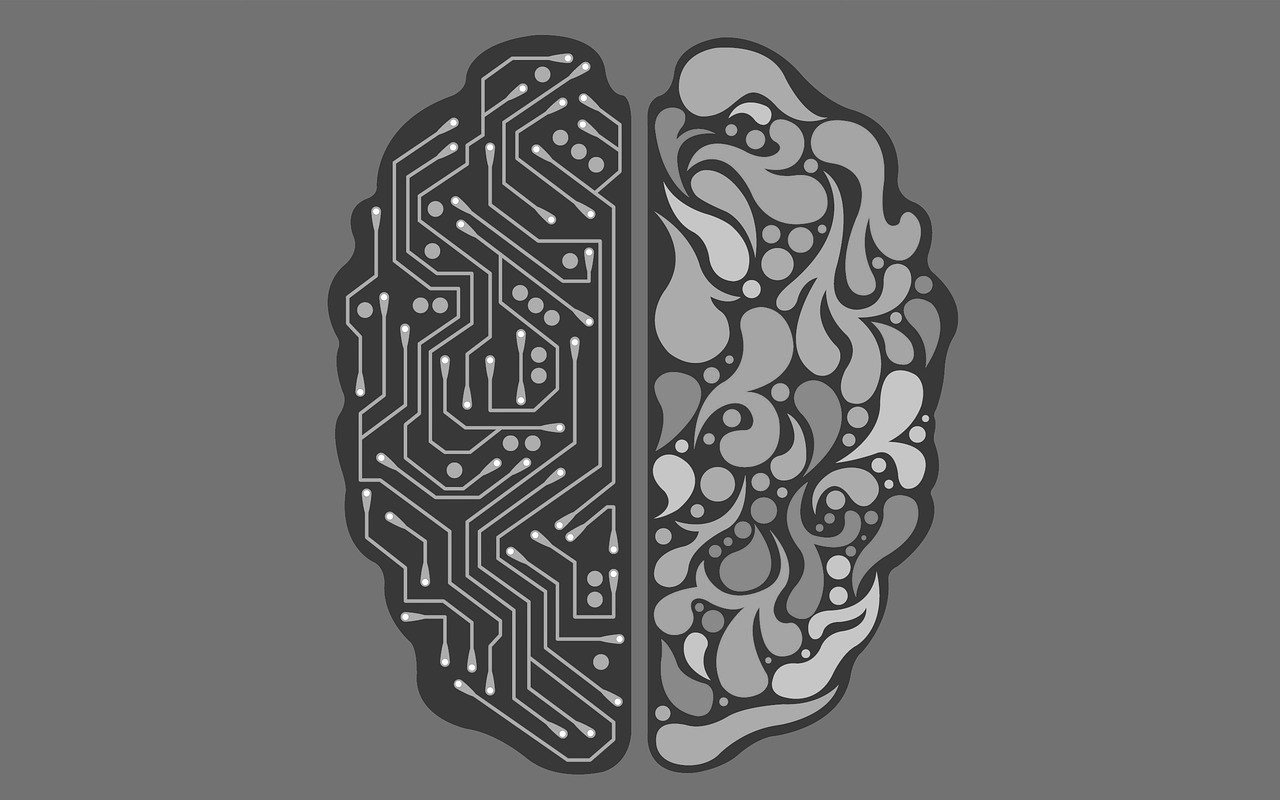Ai-generated videos are made using computer algorithms and deep learning techniques to automatically create videos from a dataset of images, videos, and audio clips that correspond to the desired theme of the video. These videos can be generated from text prompts, images, or even audio inputs, thanks to the use of AI tools such as chatbots, language models, and AI models.
The future of AI video generation holds the potential for creating realistic day-to-day scenes or even fantastical sci-fi worlds. AI video generators are a type of machine learning technology that can produce a variety of different videos based on a few human inputs, capturing high-quality and engaging content in the process.
Introduction To Ai-generated Videos
The world of video production has witnessed a revolutionary transformation with the emergence of AI-generated videos. These videos are created using artificial intelligence tools and algorithms, which allow for the automatic generation of high-quality video content from various inputs such as text prompts, images, and audio. In this article, we will delve into the fascinating process of how AI-generated videos are made, exploring their rising popularity and importance across different industries.
Brief Overview Of Ai-generated Videos
AI-generated videos are produced using advanced technologies and machine learning algorithms. These algorithms analyze large datasets to learn patterns in style, tone, and content, enabling them to generate new videos that can range from realistic day-to-day scenes to fantastical sci-fi worlds.
Increasing Popularity And Importance Of Ai-generated Videos In Various Industries
The use of AI-generated videos has gained significant popularity and importance across various industries. Let’s take a closer look at how they are making a difference:
1. Marketing and Advertising
AI-generated videos have become valuable assets in marketing and advertising campaigns. They offer a cost-effective solution for creating engaging content that captures the attention of target audiences. Marketers can leverage AI technologies to generate personalized videos based on customer data, resulting in more targeted and effective campaigns.
2. Entertainment and Media
In the entertainment and media industry, AI-generated videos have opened up new possibilities for content creation. With AI-powered systems, filmmakers, animators, and game developers can quickly produce visually stunning videos and animations, saving both time and resources.
3. Education and Training
AI-generated videos have also proved to be valuable in the field of education and training. By leveraging AI tools, educators can create interactive and engaging video content that enhances the learning experience. These videos can be used for e-learning platforms, virtual training sessions, and educational simulations.
4. Product Demonstrations and Prototyping
Companies in various industries are utilizing AI-generated videos to showcase product demonstrations and prototypes. By visualizing products through videos, businesses can effectively communicate their features and benefits, giving potential customers a clear understanding of what they offer before making a purchase.
5. Virtual Reality and Augmented Reality
AI-generated videos play a crucial role in the development of virtual reality (VR) and augmented reality (AR) experiences. These videos provide the foundation for creating immersive and realistic virtual environments, enhancing user engagement and interactivity.
6. Social Media and Influencer Marketing
Social media platforms have witnessed a surge in the use of AI-generated videos by influencers and content creators. These videos offer a unique and attention-grabbing way to engage with followers and promote products or services.
Overall, AI-generated videos are revolutionizing the way we create, consume, and interact with visual content. As AI technologies continue to improve, we can expect even more remarkable advancements in the field of video production.
Ai Video Generation Techniques
AI video generation techniques involve using AI tools, such as chatbots and language models, to automatically create high-quality videos. These AI-powered systems can generate videos from text prompts, images, or even audio inputs, providing a seamless and efficient way to produce video content.
Artificial intelligence (AI) has revolutionized various industries, and video production is no exception. AI video generation techniques utilize advanced algorithms and machine learning models to automatically create engaging and realistic videos. In this section, we will explore different AI techniques used in video generation and how they work.
Exploring Different Ai Techniques Used In Video Generation
AI video generation relies on a combination of techniques such as deep learning models, chatbots, and language models. These techniques allow AI systems to understand and interpret input data, whether it’s text, images, or audio.
Deep Learning Models For Video Synthesis
Deep learning models play a crucial role in AI video generation. These models are designed to learn from vast amounts of data and generate high-quality videos based on input instructions. One popular deep learning model used for video synthesis is Generative Adversarial Networks (GANs). GANs consist of two neural networks, a generator, and a discriminator. The generator creates realistic videos, while the discriminator analyzes and provides feedback on the generated videos. Another deep learning model commonly used is Recurrent Neural Networks (RNNs). RNNs are designed to process sequential data and can be trained to generate videos frame by frame, ensuring smooth transitions and coherence.
Ensuring High-quality Ai-generated Videos
To ensure the production of high-quality AI-generated videos, various techniques are employed. One technique is the use of pre-trained models, which have already learned from extensive datasets and can generate more accurate and realistic videos. These pre-trained models can be fine-tuned on specific tasks or further optimized for generating videos. Additionally, AI video generation techniques leverage concepts like style transfer and object recognition. Style transfer allows the AI system to apply the visual style of one video or image onto another, creating visually stunning and unique videos. Object recognition techniques enable the AI system to identify and manipulate various objects within the video, adding life-like animations and visual enhancements. In conclusion, AI video generation techniques are constantly evolving, leveraging advanced deep learning models, chatbots, and language models. These techniques enable AI systems to understand and interpret input data to generate high-quality, engaging, and realistic videos. By leveraging the power of AI, video production can be streamlined and automated, opening up exciting possibilities for content creators and businesses alike.
Text-to-video Generation Process
AI-generated videos from text prompts, images, or audio inputs. These AI-powered systems analyze large datasets, use natural language processing, and machine learning algorithms to generate high-quality video content automatically. With the future of AI video generation promising realistic day-to-day scenes or fantastical sci-fi worlds, the possibilities are endless.
Understanding The Process Of Generating Videos From Text Prompts
Generating videos from text prompts is a fascinating process that showcases the advancements in artificial intelligence technology. In this text-to-video generation process, sophisticated AI models analyze text inputs and transform them into engaging video content. By harnessing the power of machine learning algorithms, AI video generators can create realistic or imaginative videos based on the provided prompts. This innovative technology opens up endless possibilities for content creation, making it easier and more efficient than ever before.
Steps Involved In The Text-to-video Generation Process
The text-to-video generation process involves several essential steps that work together harmoniously to create impressive AI-generated videos. Let’s delve into the process and gain a better understanding of how it works:
Step 1: Preparing The Text Input
The first step in generating videos from text prompts is to prepare the text input. This typically involves refining the text, ensuring it contains all the necessary details, and is clear, concise, and to the point. Whether it’s a script, story outline, or description, the text input serves as the foundation for the video generation process.
Step 2: Natural Language Processing (nlp)
Once the text input is ready, the AI model utilizes natural language processing (NLP) techniques to comprehend the content. NLP helps the AI system understand the context, extract key information, and identify the tone, sentiment, and style of the text. This step is crucial for ensuring that the generated video aligns with the intended message and desired outcome.
Step 3: Visual Element Generation
After analyzing the text input, the AI model moves on to generate the visual elements of the video. This involves selecting or creating appropriate scenes, characters, backgrounds, and other visual components based on the content of the text. AI models can integrate pre-existing libraries of images or create new visuals from scratch to bring the text to life in the form of a video.
Step 4: Scene Composition And Editing
Once the visual elements are in place, the AI system proceeds to compose and edit the scenes. It determines the sequencing, transitions, camera angles, and other cinematography aspects to create a visually appealing and coherent video. By leveraging sophisticated algorithms, the AI can ensure that the scenes flow seamlessly and capture the essence of the text input.
Step 5: Audio Integration
To enhance the video experience, the AI model integrates relevant audio elements. This includes selecting appropriate background music, sound effects, and voiceovers that complement the visuals and amplify the overall impact of the video. By synchronizing the audio with the visuals, the AI-generated video becomes more immersive and engaging.
Step 6: Refinement And Review
Once the video has been generated, a refinement and review process takes place. This involves quality control checks to ensure the video meets the desired standards. Adjustments, refinements, or edits are made if necessary to enhance the quality and cohesiveness of the final output.
Step 7: Final Video Output
After the refinement stage, the AI system delivers the final video output based on the text input. This video can be downloaded, shared, or embedded in various platforms, offering a compelling and creative visual representation of the original text prompts. By understanding the text-to-video generation process, we gain insights into the remarkable capabilities of AI technology in content creation. The seamless integration of natural language processing, visual element generation, scene composition, audio integration, and refinement ensures that AI-generated videos are dynamic, captivating, and tailored to specific requirements. In conclusion, the text-to-video generation process showcases the power of AI in transforming text prompts into visually compelling videos. By leveraging advanced machine learning algorithms, AI video generators can revolutionize the way we create, consume, and engage with video content.
Image-to-video Generation Process
AI-generated videos have become increasingly popular, revolutionizing the way videos are created. One of the key processes involved in creating these videos is the image-to-video generation process. In this article, we will delve into the steps involved in this fascinating process. So, let’s dive in and explore how AI can generate videos from images.
Explaining How Ai Can Generate Videos From Images
AI technology has advanced to a point where it can now generate videos from static images, giving life to still images in a remarkable way. The image-to-video generation process involves training deep learning models to identify detailed features within an image and animate them to create a dynamic video. This process allows for the creation of engaging and visually stunning videos with fluid movements.
Steps Involved In The Image-to-video Generation Process
To better understand the image-to-video generation process, let’s walk through the steps involved:
- Input: The process starts with a single still image as the input. This could be any image, such as a photograph, a drawing, or computer-generated graphic.
- Feature Extraction: The AI model then extracts key features from the input image, such as objects, colors, textures, and shapes. This step is crucial for generating realistic movements in the final video.
- Frame Prediction: The model predicts the movements and transitions between frames by analyzing the extracted features. It leverages the patterns and structures learned during the training phase to generate smooth and coherent motions.
- Interpolation: To enhance the fluidity of the video, interpolation techniques are employed. These techniques fill in the gaps between the predicted frames, making the transitions seamless and visually appealing.
- Output: Finally, the AI model generates a complete video by stitching the frames together. The output is a fully animated video sequence, breathing life into the original static image.
By following these steps, AI-generated videos transform ordinary images into captivating visual experiences. This revolutionary technology paves the way for endless creative possibilities in various industries, including advertising, entertainment, and storytelling.
Audio-to-video Generation Process
AI video generation is a process that utilizes AI tools to automatically create high-quality videos from text, images, or audio inputs. These AI-powered systems analyze data and generate content that captures realistic scenes or fantastical worlds. Experience the future of video creation with AI technology.
How Ai Can Generate Videos From Audio Inputs
AI technology has made significant strides in generating videos from audio inputs, revolutionizing the way video content is produced. By harnessing the power of artificial intelligence, video generation systems can now automatically create high-quality videos from audio, allowing for seamless storytelling and content creation.
Steps Involved In The Audio-to-video Generation Process
The audio-to-video generation process involves several steps that work together to convert audio inputs into visually appealing videos. Let’s take a closer look at these steps:
- Audio Data Processing: In this initial step, the AI system analyzes and processes the audio input, separating it into distinct components. This process helps identify different elements such as speech, music, background noise, and other audio cues.
- Speech-to-Text Conversion: Once the audio data is processed, the system uses advanced speech recognition algorithms to convert the spoken words into text. This step is crucial as it enables the AI system to understand and interpret the audio content accurately.
- Text-to-Visual Mapping: With the converted text, the AI system then maps it to relevant visual elements. It analyzes the context and semantics of the content to generate appropriate visuals that align with the audio input. This mapping process ensures that the visuals accurately represent the intended message conveyed through the audio.
- Visual Animation: After mapping the text to visuals, the AI system animates the visual elements to bring the video to life. It uses sophisticated algorithms to determine the movements, gestures, and expressions that synchronize with the audio cues, creating a visually engaging experience.
- Post-Processing: Once the audio-to-video conversion is complete, the generated video goes through a post-processing phase. Here, the AI system enhances the visual quality, adds effects, transitions, and applies other artistic touches to optimize the overall video presentation.
Challenges And Limitations Of Ai Video Generation
AI video generation has revolutionized the way videos are created, but it is not without its challenges and limitations. In this section, we will discuss the various hurdles faced in AI video generation and the current limitations of the techniques used.
Discussing The Challenges Faced In Ai Video Generation
Creating AI-generated videos involves complex algorithms and deep learning techniques. However, this process is not without its challenges. Let’s take a look at some of the major hurdles faced in AI video generation:
- Quality and Realism: One of the primary challenges in AI video generation is achieving high-quality and realistic results. While AI models have become adept at generating video content, there is still room for improvement in terms of visual fidelity and smoothness of motion.
- Understanding Context and Intent: AI systems often struggle with comprehending the context and intent behind the input provided. This can lead to videos that are not aligned with the desired outcome or fail to capture the intended message effectively.
- Controlled Output: Another challenge lies in controlling the output of AI-generated videos. AI systems tend to introduce unpredictable elements or unexpected transitions, making it essential for creators to have fine-grained control over the generated content.
- Complex Scenes and Movements: Generating videos with complex scenes, intricate movements, or dynamic interactions pose significant challenges. AI models may struggle to accurately capture the complexity of such scenarios, resulting in less realistic or visually inconsistent videos.
Limitations Of Current Ai Video Generation Techniques
While AI video generation has come a long way, there are still limitations that need to be addressed. Here are some of the key limitations of current AI video generation techniques:
| Limitation | Explanation |
|---|---|
| Limited Dataset | The quality of AI-generated videos heavily relies on the training dataset. If the dataset is small or lacks diversity, the generated videos may lack variation or fail to capture a wide range of scenarios. |
| Computational Requirements | AI video generation can be computationally intensive and requires powerful hardware resources. This can be a limitation for individuals or organizations with limited access to high-end computing infrastructure. |
| Legal and Ethical Concerns | AI-generated videos raise legal and ethical concerns related to copyright infringement, privacy violations, and misrepresentation. Clear guidelines and regulations are needed to address these issues and ensure responsible use of AI in video content creation. |
| Domain-specific Limitations | AI video generation techniques may struggle with specific domains or niche topics. The models trained on general datasets may not be able to generate accurate or contextually relevant videos for specialized fields. |
Overall, while AI video generation has opened up exciting possibilities, it is crucial to acknowledge and work towards overcoming these challenges and limitations. With continued research and advancements in technology, we can expect AI-generated videos to become more sophisticated, realistic, and aligned with the creative intent of their creators.
Future Of Ai Video Generation
AI video generation is the process of using AI tools like chatbots and language models to automatically create high-quality videos. These AI-powered systems can generate videos from text prompts, images, or audio inputs, making video creation seamless and efficient. The future of AI video generation looks promising, with the potential for even more advanced capabilities and realistic video production.
Exploring The Potential Advancements In Ai Video Generation
AI video generation is an emerging technology that has the potential to revolutionize the way videos are created. With advancements in artificial intelligence, the possibilities for AI-generated videos are expanding at an exponential rate. Let’s explore some of the potential advancements in this field:
1. Realistic visual effects
AI video generation has the ability to create highly realistic visual effects that were previously only achievable through complex and time-consuming manual processes. With AI algorithms trained on vast amounts of data, these systems can generate stunning visuals that seamlessly blend with real-world footage. From futuristic sci-fi scenes to lifelike characters, AI video generation opens up endless possibilities for visual storytelling.
2. Faster video production
Traditional video production involves a multitude of time-consuming tasks, such as scripting, shooting, and editing. With AI video generation, many of these tasks can be automated, significantly reducing the time and effort required to create a video. AI-powered systems can generate videos from text prompts or other inputs in a matter of minutes, allowing for faster turnarounds and increased productivity.
3. Enhanced personalization
AI video generation can enable highly personalized video content tailored to individual viewers. By analyzing user data and preferences, AI algorithms can create videos that cater to specific interests and demographics. This level of personalization can greatly enhance user engagement and make videos more impactful for marketing campaigns, e-learning platforms, and entertainment purposes.
Impact Of Ai-generated Videos On Various Industries
The impact of AI-generated videos extends beyond the realm of entertainment and media. This technology has the potential to revolutionize various industries, including:
1. Marketing and advertising
AI-generated videos offer marketers and advertisers innovative ways to engage with their audience. By creating personalized and targeted video content, brands can deliver more effective campaigns that resonate with consumers. AI algorithms can analyze consumer data to understand preferences and create videos that are more likely to convert viewers into customers.
2. E-learning and training
AI video generation has the potential to transform e-learning and training programs. By automatically generating instructional videos, AI systems can provide learners with interactive and engaging content. This technology can be particularly useful in sectors such as healthcare, where complex procedures and techniques can be visually explained through AI-generated videos.
3. Film production and visual effects
AI video generation can enhance the film production process by automating certain tasks and enabling creative experimentation. Filmmakers can use AI systems to generate concept art, create virtual environments, and even generate computer-generated characters. This technology can streamline the production process and bring a whole new level of visual creativity to the film industry. In conclusion, the future of AI video generation is full of exciting possibilities. From realistic visual effects to faster video production and enhanced personalization, AI-generated videos have the potential to transform various industries. As this technology continues to advance, we can expect to see even more innovative applications and groundbreaking developments in the field of AI video generation.

Credit: 9to5google.com
Frequently Asked Questions For How Are Ai-generated Videos Made?
How Does Video Generation Ai Work?
Video generation AI works by using AI tools like chatbots and language models to automatically create high-quality videos. These AI-powered systems can generate videos using text prompts, images, or audio inputs. They analyze large datasets of text and learn how to produce new videos in a similar style and tone.
Are Ai Generated Videos Real?
AI-generated videos are real and created using AI tools such as chatbots and language models. These systems use text prompts, images, or audio inputs to automatically generate high-quality video content. The future of AI video generation looks promising, as it can create realistic scenes or imaginative worlds.
How Does Ai Generate Content?
AI generates content using machine learning algorithms, particularly natural language processing, to analyze large datasets of text. Through this analysis, AI models learn to generate new content that matches the style and tone of the input data. This can be done using text prompts, images, or audio inputs to produce high-quality video content.
How To Make Ai Generated Videos For Free?
To make AI generated videos for free, you can use platforms like Synthesia. io. Simply visit the website, select a template, type in your script, and generate your AI video for free. These AI-powered systems can produce videos from text prompts, images, or audio inputs.
AI video generation uses computer algorithms and deep learning techniques to automatically create videos.
Conclusion
AI-generated videos are created using advanced AI tools like chatbots and language models to produce high-quality video content. These systems can generate videos based on text prompts, images, and even audio inputs. AI video generation is a rapidly evolving field with a promising future.
These AI-powered tools have the ability to create realistic day-to-day scenes or imaginative sci-fi worlds. However, it’s important to carefully consider the ethics and implications of AI video generation. With the ability to generate content quickly and easily, AI-generated videos have the potential to revolutionize video creation.




